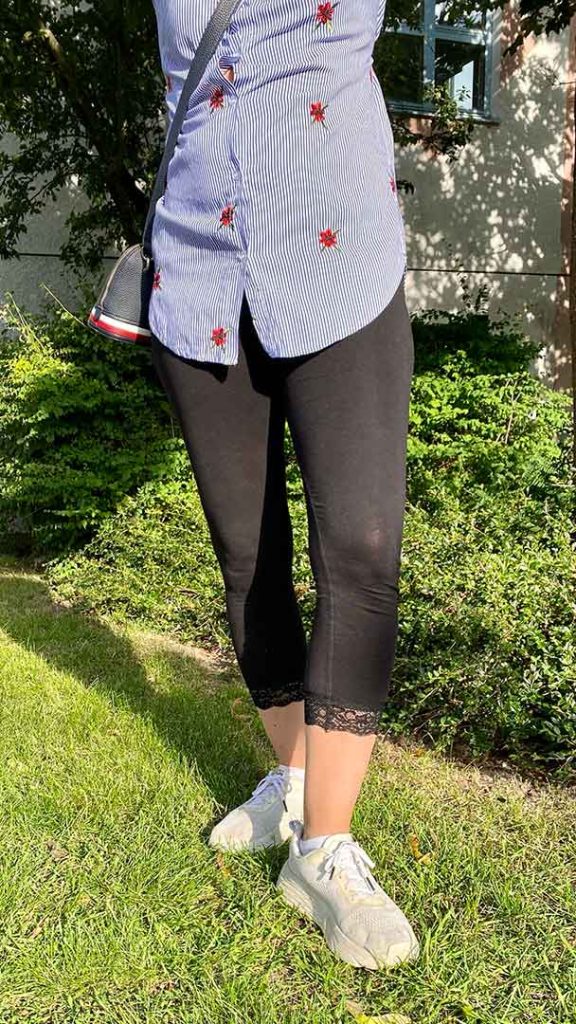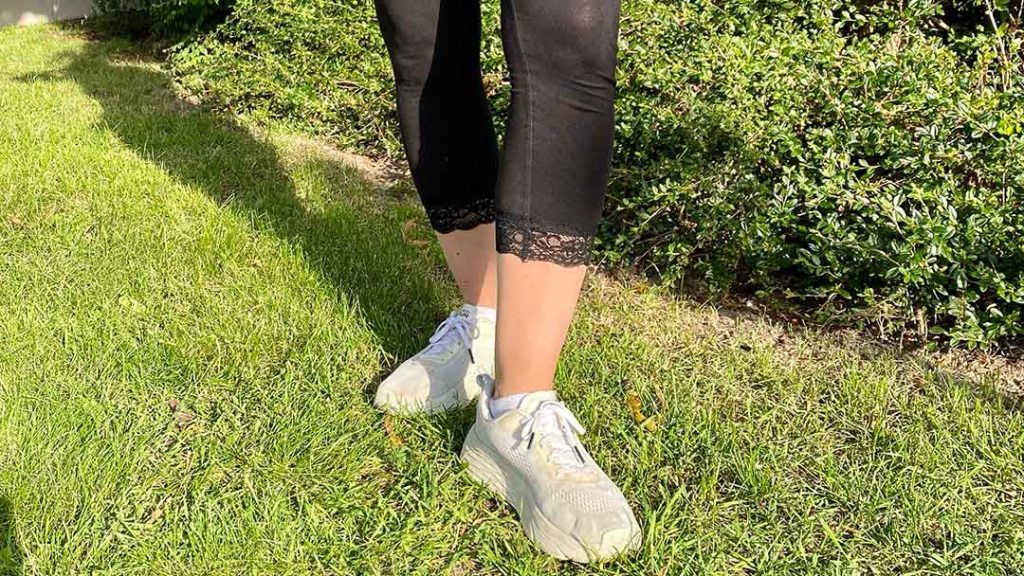Estimated read time: 8 minutes.
Many people often ask whether it is okay to wear running shoes casually. While some people find it normal, we must understand that training shoes are specifically designed with features to support your feet while jogging, running, or exercising in the gym.
What attracts people to buying training shoes is that they are versatile, flexible, stylish, and perfect for any outdoor activities. However, you should understand that each training shoe fits and performs slightly differently. Understanding your tests and preferences will help you choose the right pair anytime, anywhere.
The downside of wearing training sneakers casually is that it reduces their lifespan, especially the outsole. Also, cleaning sneakers is not easy as some of them have thick cushioning.
So, let’s dig more into wearing running shoes casually.
What Are Training Shoes?
As the name suggests, training sneakers are specifically designed to be worn during exercises or fitness classes. These shoes are meant for protecting and supporting athletes from injuries during training sessions. Additionally, most training shoes have thick cushions that absorb shock and prevent injuries.
According to experts, you should wear training sneakers within the gym or training facilities. Otherwise, you should look for walking shoes if you wish to use them for casual wear.
There are many uses of training shoes, including but not limited to gym classes, jumping, cross training, squats, lunging, and more.
How to Choose the Right Running Shoe
Many factors are involved when choosing the perfect training shoes. First, you must think of the type of physical activity you are going to be involved in. Also, make sure you know the pronation of your leg to help you choose a good athletic shoe.
These factors are:
Running Surface
Before picking an athletic shoe, make sure you know your running surface. This will reduce injuries and increase overall performance. There are different surfaces that require specifically designed shoes. Depending on your surface, you can choose road training, trail-running, or cross-training shoes.
For instance, running on rocky and tough terrain puts more stress on your ankles, knees, and other body parts. Therefore, it requires you to wear running shoes with shock absorption and extra protective materials.
Purpose
What is the reason for buying a running shoe? Do you plan to use it for short and speedy trends or fast-paced exercises? Also, how often do you intend to use your running shoes? Is it once per week on a treadmill or daily wear? The right shoes are built with advanced technology that optimizes your purpose, whether speed, recovery, or comfortability.
Running Gait
Knowing your running gait will help you to pick a shoe that matches your foot. You must know whether your foot is neutral, overpronate, or supinate. Modern shoe stores use advanced video technology to help customers to know their running styles.
Amount of Cushion
The support provided by running shoes is determined by cushioning and foam. You’ll find shoes with minimal, moderate, and maximum cushions. A cushion is a material in the midsole of a running shoe that helps in absorbing impact.
Popular Types of Running Shoes
Running shoes are available in different types. Each shoe is designed for a specific purpose and is classified based on foot movements when hitting the ground. These are the main types of running shoes in the market:
Stability Running Shoes
Runners with normal arches wear stability running shoes. Their foot flow requires good support and sufficient midsole cushioning. The advantage of stability shoes is that they lower excessive pronation by providing ankle and arch support. This makes them a good choice for long walks, training, and casual wear.
Motion Control Shoes
Runners with low arches and overpronation wear motion control shoes to reduce pronation. These shoes are rigid with wide soles to minimize excessive movement. Additionally, these shoes offer good support in the midsole and bridge of the running shoes. Therefore, you can use them for all-day wear without posing a risk to your feet.
Cushioned Running Shoes
Cushioned running shoes are customized for people with high arches as they have padding in the midsole and outsole. The shoes are designed to offer shock absorption and protect your heel and forefoot. Cushioned shoes are the best training shoes for everyday wear. The extra padding in the shoes makes them comfortable footwear for daily use.
Trail Running Shoes
Trail running shoes are suitable for unpredictable terrains. Their design offers stability and support, especially to the ankle and feet. Though trail shoes provide maximum safety your feet need, using them for everyday wear will cause them to lose their grip.
Lightweight Running Shoes
Lightweight shoes are good for people who do a lot of speed-running exercises. These shoes have less foam and medium cushion to allow natural and dynamic foot movement. However, lightweight shoes are not recommended for casual wear because they lack basic safety features like safety, comfort, and shock resistance.
How to Match Training Shoes with Your Outfit

Wearing training shoes with the outfit is not a new trend. As earlier mentioned, you can wear training shoes casually when going for a walk or night out with friends. However, matching the right training shoes with your casual wear can be tricky. Let’s take you through how you can perfectly wear your running shoes with denim shorts, t-shirts, jeans, etc.
Wear the Right Dress Pants or Pair of Jeans
Jeans are quite common and many people like matching them with casual trainers. The good thing about jeans is that they match all kinds of occasions. Since most sneakers have a sporty look, you must select the right outfit. Some people match slim jeans with athletic shoes with a casual shirt or a t-shirt.
Match Sneakers with the Right Pair of Socks
Every athletic shoe has a critical gear it goes with, and this includes socks. It is recommended to wear no-show socks with training sneakers.
Choose the Right Color
If you want a more classic look, you should be good at playing with different shades of colors. You must match the right color of jeans with sneakers. For instance, a charcoal gray pair of jeans go well with black training shoes.
Occasion
Most casual wear clothing like jeans and t-shirts, fall shorts, and sweaters are great for weekends and informal occasions. However, you should confuse casual wear with business casual wear. Also, you must not match training sneakers with shirts or suits.
Advantages of Wearing Your Running Shoes Casually
These are the reasons for wearing training shoes casually:
Comfortable
A good pair of running shoes will make you feel extremely comfortable all day long. The shoes are designed with breathable fabrics and cushioning to keep your feet warm and safe. Popular brands like Nike design shoes you can wear casually on a daily basis.
Stylish Designs
There is stiff competition in training shoe designs among producers. The stylish designs of sneakers make them good to match with any pair of jeans and t-shirts.
Reduce Injuries
Most training sneakers are built with synthetic materials to reduce ankle injuries, avoid blisters, and save your foot from pronation. This is why many people prefer wearing them casually.
Versatile
Another good reason training sneakers can be perfect for all day use is they are built with long-lasting outsoles and top covers. This is done to improve the durability and breathability of the shoes.
Disadvantages of Wearing Running Shoes Casually
The following are the disadvantages of wearing your running shoes casually:
Durability
One of the disadvantages of wearing training shoes for other purposes is they may wear out quickly. Most shoes have a soft midsole to enhance support and comfortability. Wearing it casually may weaken the shoe’s midsole and render it useless.
Expensive
Training sneakers can be pretty expensive, depending on the brand. Nike is one of the leading companies in creating the most comfortable footwear. Using these shoes every day means you’ll be replacing them often. This can be expensive for people with low incomes.
Takes Long to Recover
A standard training shoe takes between 24 and 48 hours to recover. They take this long because the midsole needs to expand back to its normal position.
Bottomline – Can Running Shoes be Worn Casually?
Even though running shoes are designed for sports activities, they can also be worn casually when going about your daily chores. The soft, flexible, and protective materials make them a great option, regardless of the surface.
Nevertheless, the question of whether or not to wear running shoes casually depends on the person. Before wearing training sneakers, do understand that they have some drawbacks. Make sure you pick the right size and comfortable design for the sneakers.
Common Questions About Wearing Training Shoes Casually
- How Many Laps Around a Track is a 5K: Your Guide - October 22, 2023
- When is Track and Field Season? - October 22, 2023
- Understanding the Length: How Long Is a Running Track? - October 22, 2023



